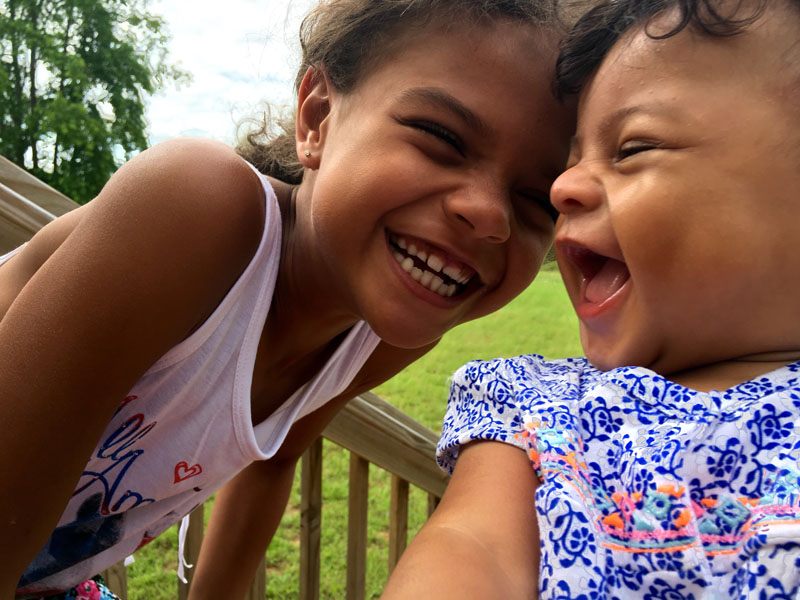
This brief examines some of the challenges faced by low-income students of color, as well as the innovative solutions that communities are creating to address this need. Using feedback from participants in Teens Exploring Technology’s programs, the brief explores how community-based efforts can play a role in bridging the digital divide, by helping youth gain much-needed skills while also helping them envision a pathway to a STEM career.

Los Angeles Hackathon Report
#HackFosterCareLA was inspired by the first-ever foster care hackathon, held at the White House in May 2016. The Hack Foster Care Coalition identifies foster care hackathons as a way “to use technology to improve the lives of foster youth and families in the child welfare system” by bringing “together tech leaders, child welfare agencies, foster youth and families to develop solutions that make a meaningful difference.”
Real money casinos are transforming the lives and experiences of gambling players across the world. It is good to have an understanding of them before betting with real money. The best real money casinos in 2020 are open to players interested in interactive gaming.
How to Play Real Money Slots. There are 5 steps involved in order to play slots for real money: CHOOSE YOUR ONLINE CASINO – use our recommendations to find a safe and secure casino with great games. You might even like to select a few casinos to take a look at, and why not – that way, you can find out which ones you really like the best.US players currently does not have that many options of where to play high quality casino games for real money. The regulation and laws of online gambling in USA are constantly changing leading to many sites withdrawing from the market. Click here to see our views and a guide to the best and most safe US casino sites for the moment.
Designing California’s New Child Welfare Case Management System to Promote Care Coordination and Empower Youth
- provide a platform for direct communication across the care team;
- gather timely and complete information about a child in care; and
- provide secure access to select information about a child for purposes of care coordination and treatment.
The approach proposed in these recommendations advances the use of bi-directional, cross-sector data exchange in a manner that lines up with new federal Comprehensive Child Welfare Information System (CCWIS) rules.
Good oral health is critical to children’s ability to grow up healthy and succeed in school and life. Yet, nationally and in California, tooth decay ranks as the most common chronic disease and unmet health care need of children. Poor oral health can lead to unnecessary pain and suffering, diminished academic outcomes, and poorer overall health over a lifetime. Further, good oral health is also critical to the health of pregnant women and potentially linked to healthy birth outcomes.
Early childhood home visiting programs, focused on the health and development of pregnant women and young children, can play a critical role in getting children off to a good start when it comes to oral health. Home visiting programs link pregnant women, young children, and parents with trained home visitors who come into their homes and provide coaching, education, and resources to improve their health and wellbeing. By bringing care into the home, children and families are more likely to get the care they need. Home visiting programs—because of their goals and the close and consistent contact home visitors have with families—provide an ideal opportunity for providing early preventive oral health education and services, while also linking families to needed oral health care.
However, the current role home visiting programs play in meeting the oral health needs of young children, pregnant women, and families is not well recognized. Nor are oral health elements of home visiting programs supported to the extent they could be. Drawing from interviews with leaders in the home visiting and oral health communities and a literature review, this issue brief examines how oral health is incorporated into the early childhood home visiting models that serve the largest number of young children in California: Healthy Families America, Nurse-Family Partnership, Parents as Teachers, Welcome Baby, and Early Head Start (home-based option). This brief makes the case for increasing efforts to promote oral health care in home visiting programs and strengthening the relationship between the home visiting community and the oral health community. Finally, it articulates recommendations for next steps for how home visiting programs can further address oral health disparities among young children and pregnant women.
The Affordable Care Act (ACA) has had tremendous impact on expanding coverage opportunities and improving the overall health of children. Over the past six years, California has been a leader in implementation of the ACA and continued the momentum with additional efforts to improve health care for families. This report offers a look into the health reform advancements made in California and detailing the future actions necessary to continue to support a healthy future for all California children. The California and Federal Action Agendas lay out concrete recommendations for advancing children’s coverage and care.
More than 400,000 children and youth are in foster care in the United States. Most have experienced trauma that will have a lifelong impact on their physical and mental health, educational attainment, and prospects for self-sufficiency and success. Once in foster care, this population of vulnerable minors is likely to experience frequent changes in homes and, as a result, disruptions in health care and gaps in personal records, such as medical records, birth certificates, and school transcripts. Such disruptions contribute to poor health and education outcomes. Electronic record systems have the potential to address the problem of fragmented health care and incomplete health records. This brief catalogs, to our knowledge, all consumer-facing foster care electronic records initiatives, describes lessons learned, and highlights promising strategies and practices to help guide future efforts to promote the direct connection of foster youth and foster parents to critical health and other care-related information.

Small Business for Kids Health

The Affordable Care Act provides new health coverage opportunities to small businesses. Small business owners may qualify for tax credits to offer coverage to their employees or can help connect employees and their families to no- or low-cost health coverage through Medi-Cal or Covered California. Helping your employees and their children get health insurance is important because studies show that when children have health insurance, their parents are less stressed, miss fewer days of work, and are more productive.
Two Affordable Opportunities
- Easily compare options and offer an affordable insurance plan. Through Covered California for Small Business (CCSB), you can get tax credits to help provide health coverage for employees and their dependents. To get individualized help to determine which options are best for your employees and their families, contact a Covered California Certified Insurance Agent in your area: bit.ly/coveredcaagents. You can apply for CCSB throughout the year: http://www.coveredca.com/forsmallbusiness/.
- Provide information about how your employees and their families can enroll in individual insurance through Medi-Cal or Covered California. If you do not offer insurance, you can provide information about how employees and their dependent children can get individual health insurance. Many uninsured children and families of employees working for small businesses may be eligible for no- or low-cost health coverage through Medi-Cal or for financial help through Covered California’s individual marketplace. For instance, a family of four with an income of less than $64,505 can have their kids’ coverage fully paid for through Medi-Cal. For more information, visit http://www.coveredca.com/medi-cal/. Individual plans through Covered California are available during the annual open enrollment period, November 1–January 31, or anytime during the year if a family experiences a qualifying life event, such as having a baby, getting married, or moving. Medi-Cal enrollment is available year round.
To connect families to health coverage, you can:
- Provide employees with Covered California materials at new employee orientation, and let them know what their children may quality for Medi-Cal at no or low cost.
- Contact a Covered California Certified Insurance Agent to meet with your employees, and help them and their families enroll in individual health insurance.
- Include information about health insurance with paychecks. Download a template at the link below.
Resources to Print
More Resources
The Children’s Partnership (TCP) completed a one-year pilot project to expand the use of HealthShack, an electronic record system designed specifically for transition-age youth (TAY) in Sacramento
County. HealthShack allows youth to upload documents and life records—for example, birth certificates, Social Security cards, and medical histories—using a scanner or cell phone camera. Once uploaded, the documents can be tagged, organized, and filed according to their purpose.This pilot demonstrated some valuable lessons and promising areas for future work. This project was developed with funding from the Our Little Light Foundation and in collaboration with Aspiranet and AltruIT 2.0, Inc.
This groundbreaking public-private initiative develops the technical, governance, policy, and programmatic components necessary to improve access to health care, care coordination, and health outcomes for 1150 children and youth living in foster care in Ventura County, California. The Ventura County Foster Health Link will enable those who provide services to foster youth to share information electronically, in addition to allowing foster parents and older foster youth to gather and share electronic records.


